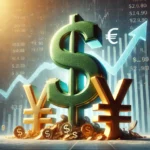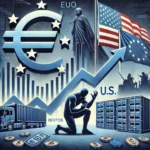The euro edged higher on Tuesday, regaining some composure after political unrest in France drove traders to seek hedging protection against potential price swings. Meanwhile, the yuan dropped to a 13-month low amid tariff concerns and signs of economic weakness in China.
The yen, which has gained nearly 4.5% over the past two weeks, slipped slightly against the dollar but remained close to six-week highs as confidence grows that Japan may implement a rate hike this month.
After ending November as the weakest G10 currency, the euro started December with a 0.7% decline on Monday and was last seen trading at $1.0487. The decline comes as France’s government teeters on the brink of collapse due to a budget impasse. [EUR/GVD]
French Prime Minister Michel Barnier faces a no-confidence vote on Wednesday, following widespread opposition to his budget plan. The proposed measures, which include tax increases and spending cuts, aim to stabilize France’s fragile finances but have sparked political turmoil.
Euro options volatility, a gauge of demand for hedging, reached its highest level since March 2023 this week. Combined with weak economic data, political uncertainty in key eurozone economies, and the strength of the U.S. dollar, the euro faces mounting challenges.
“The euro is grappling with an expanding list of headwinds,” noted City Index market strategist Fiona Cincotta. “Political instability in France is a significant factor, and there’s a broader sense of unease with weak economic prospects even in Germany,” she added.
Over the past month, the euro has lost 3% against the dollar and more than 1% against both the British pound and Swiss franc.
Dollar on Pause, For Now
The dollar typically experiences seasonal weakness in December as companies tend to purchase foreign currencies. However, this year, traders are closely monitoring the incoming Trump administration, which is helping to support the greenback.
Over the weekend, Trump warned of punitive tariffs unless BRICS nations agree to adopt the dollar as a reserve currency.
“These remarks reinforce the belief that Trump is unlikely to seek a weaker dollar during his presidency, opting instead to use tariffs to address the U.S.’s significant goods trade deficit,” said Rabobank strategist Jane Foley in a report.
“We still expect the euro/dollar to potentially reach parity by mid-next year, which may align with the implementation of new tariffs by Trump.”
China’s yuan had already weakened in anticipation of additional tariffs from Trump, and a surge in U.S. manufacturing data, coupled with a plunge in Chinese bond yields to record lows, has pushed the yuan toward 7.3 per dollar, its lowest level since last November. [CNY/]
China set the yuan’s trading band at its weakest in over a year, prompting traders to sell the currency down to 7.2996 per dollar from 7.24 on Friday. [CNY/]
The Australian dollar rose 0.4% to $0.6503, recovering some of the previous session’s 0.7% loss. Economic data was mixed, with a larger-than-expected current account deficit offset by a rise in government spending, which is expected to boost growth.The yen, the only G10 currency to appreciate against the dollar last month, reached its strongest level since late October on Monday, hitting 149.09 to the dollar before settling at 149.89, leaving the dollar up 0.2% for the day.
Markets are pricing in nearly a 60% probability of a 25 basis point rate hike in Japan this month.
The key question for investors is what Friday’s U.S. employment data will reveal and how it will affect expectations for another rate cut by the Federal Reserve later this month. Currently, there is about a 70% chance of a rate cut.





